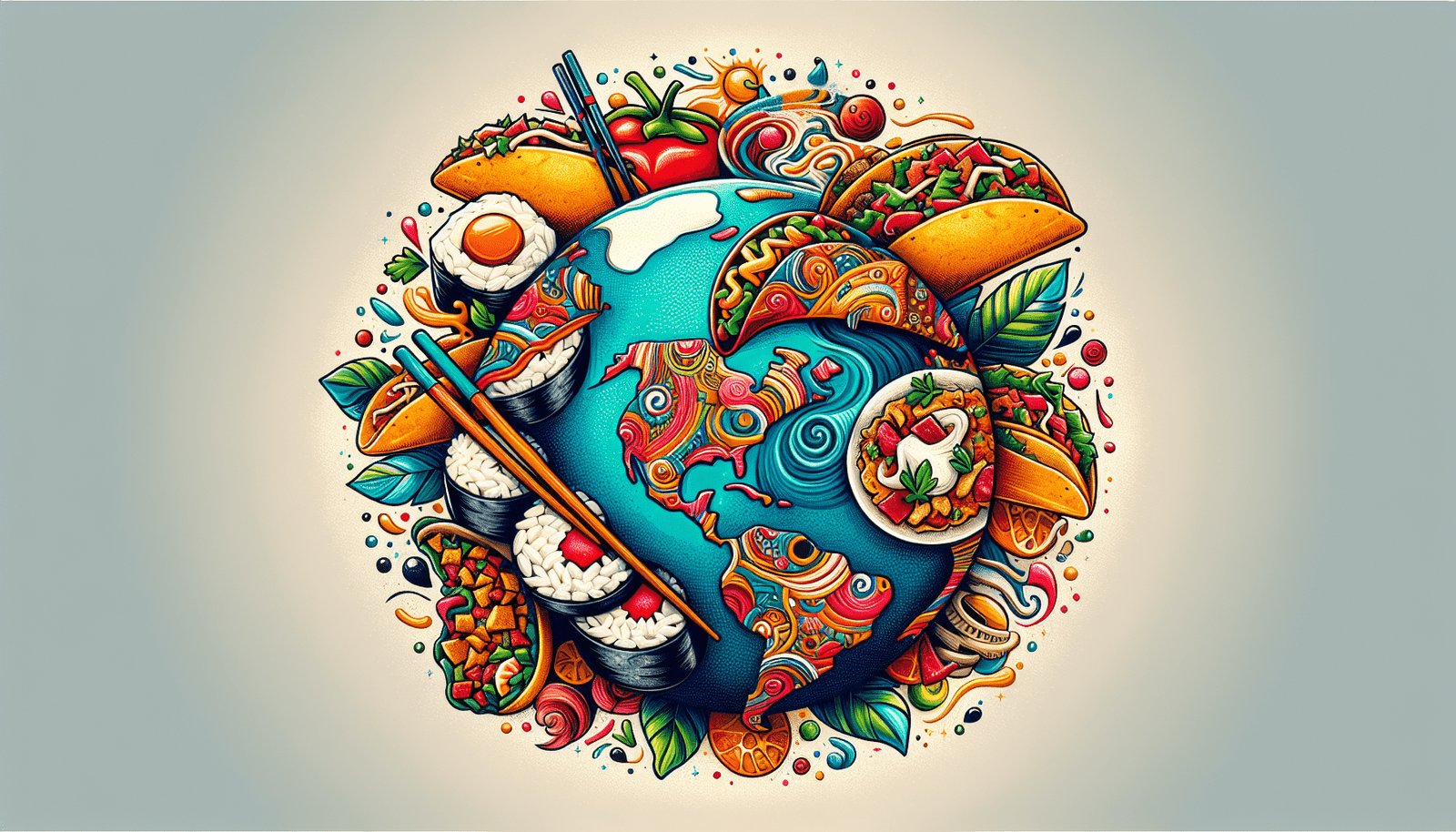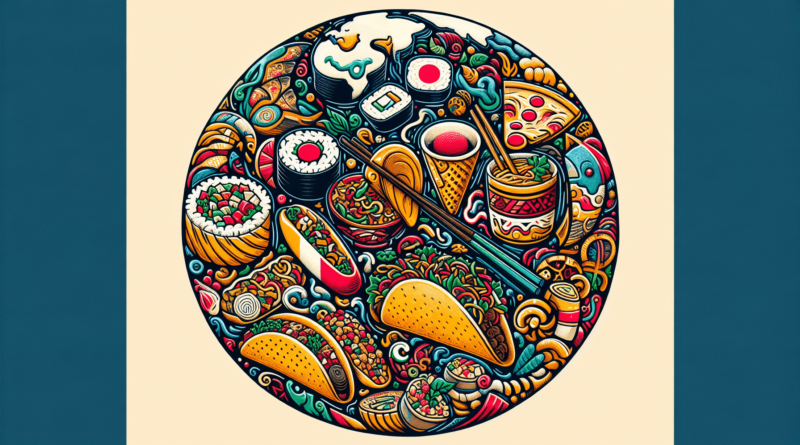Culinary Tourism
Experience the world one bite at a time with “Culinary Tourism“. This enriching journey isn’t just about indulging in exotic dishes; it’s also a delightful convergence of travel and taste that allows you to deeply intertw weft and warp of diverse cultures through their cuisine. From the spicy mysteries of East Asian cooking to the nuanced comfort of European heartland food, every plate tells a story in its unique language of flavors – a story that you, as a culinary tourist, are privileged to savor. So if you have an adventurous palette and a case of wanderlust, “Culinary Tourism” is your personal guide to the bylanes of the world’s most intriguing food markets and the culinary heritage they preserve.

Understanding Culinary Tourism
Food is not just a means of survival; it is a way to connect with culture, history, and people on a different, more intimate level. That is where culinary tourism comes to play. Known by many names, such as food tourism or gastro-tourism, it revolves around the pursuit of unique and memorable food and drink experiences.
Definition of Culinary Tourism
Get ready to wear your explorer caps, culinary tourism is an intriguing, hunger-inducing journey through the world of food and beverages! It is all about traveling to different places, regions, or countries to experience and appreciate their local food and drink specialities. Culinary tourism is not limited to fine dining but encompasses a broad spectrum of eating and drinking experiences, from street food to lavish gourmet dining.
History and Evolution of Culinary Tourism
The concept of traveling for food might seem modern, but it’s not. In ancient times, people traveled miles seeking exotic spices and flavors, influencing their local cuisine upon return. However, the term “culinary tourism” was first coined in the early 2000s, marking the inception of a new tourism trend. With the rising interest in local food culture and gastronomy, culinary tourism has transformed significantly over the years.
Significance of Culinary Tourism in Modern Times
In today’s globalized world, culinary tourism has garnered immense significance. It has become a way to explore and understand communities, regions, and their culture through their cuisine. With social media influencing travel choices, gourmands worldwide are seeking culinary escapades, making food tourism a flourishing industry.
Types of Culinary Tourism
Culinary tourism can be divided into different categories, each offering a unique perspective of food and drink culture.
Gastronomy Tourism
Gastronomy tourism revolves around the appreciation of food and drink as an art. It involves exploring the local gastronomy, interacting with chefs, understanding the cooking process, and enjoying the final gourmet experience.
Wine and Beer Tourism
Wine and beer tourism is all about visiting vineyards, breweries, or distilleries and understanding the art of crafting these beverages. This could include wine tasting, beer festivals, or even learning about the brewing process.
Agricultural Tourism
Agricultural tourism allows tourists to visit farms, interact with local farmers, and understand their farming practices. This hands-on experience could involve harvesting homegrown produce or even making cheese in a dairy farm.
The Role of Local Cuisine in Cultural Identity
Cuisine is an integral part of a region’s cultural identity.
Impact of Cuisine on Cultural Representation
A region’s cuisine tells a tale about its culture, traditions, and history. Different flavors, ingredients, and cooking methods can teach us about the society’s lifestyle, socio-economic conditions, and even religious beliefs.
Preservation of Traditional Cooking Techniques
Culinary tourism also aids in preserving traditional cooking techniques that have been passed down generations. It encourages the protection of culinary heritage by promoting local food specialities and allowing tourists to learn and understand these age-old culinary methods.
Evolution of Local Cuisine
With time and external influences, local cuisine evolves, blending traditional methods with new flavors and techniques. Culinary tourism enables this evolution and helps in its documentation, providing insights into how a region’s culinary culture has transformed over the years.

Influences on Culinary Tourism
Various factors influence culinary tourism.
Impact of Socio-Cultural Factors
Socio-cultural factors including traditions, lifestyle, and community values significantly impact the food culture of a region, thereby influencing the culinary tourism industry. The desire to experience authentic local cuisine shapes the gastronomic map of the region.
Influence of Economic Factors
Economic factors significantly affect culinary tourism. Availability of resources, price of raw materials, influence of international trade, etc., directly or indirectly impact what ends up on the plate, thereby affecting the attractiveness of a destination for culinary tourists.
Influence of Environmental Factors
Environmental factors, including the region’s climate, biodiversity, and agrarian practices, can influence the local cuisine and consequently, culinary tourism.
Promoting Culinary Tourism
Successful culinary tourism calls for effective promotion strategies.
Role of Marketing in Promoting Local Cuisine
Marketing plays a critical role in promoting culinary tourism. It involves creating awareness about a region’s culinary delights, showcasing food and drink specialties through food festivals, culinary cruises, or gourmet tours.
Digital Media in Advertising and Promoting Culinary Tourism
In the era of digital media, social platforms serve as powerful tools to promote culinary tourism. Vibrant images, delicious descriptions, and mesmerizing videos can attract foodies from around the world.
Government Policies and Initiatives to Encourage Culinary Tourism
Government policies play a vital role in propelling culinary tourism. Promoting local food culture through culinary schools, regional food festivals, and tourist incentives are some ways to encourage culinary tourism.
Benefits of Culinary Tourism
Culinary tourism comes with various benefits and opportunities.
Boosting Local Economy
Culinary tourism stimulates the local economy. It promotes local businesses and provides numerous employment opportunities.
Promotion of Cultural Diversity
It helps tourists embrace and appreciate cultural diversity seen through the lens of different cuisines. Culinary tourism is not just about tasting a new dish; it involves understanding the culture and traditions woven into the fabric of that dish.
Sustainable Tourism Development
Culinary tourism also contributes to sustainable tourism. Many culinary tourist activities promote organic farming, preservation of regional culinary traditions, and support for local businesses, all of which play a part in the sustainable development of the tourism industry.
Challenges Facing Culinary Tourism
While culinary tourism has numerous benefits, it also faces several challenges.
Globalization and Loss of Traditional Cuisine
One significant challenge is the loss of traditional cuisine owing to globalization. Local flavors often get diluted, and traditional recipes get lost in the pursuit of pleasing international tourists.
Seasonal Availability of Local Produce
The seasonal availability of local produce can also be a hurdle as tourists may miss out on specific local food experiences if they visit during off-peak seasons.
Quality Assurance and Standards
Ensuring quality and maintaining standards can pose a challenge in culinary tourism. Maintaining hygienic conditions, providing quality food and service while keeping the experience authentic can be a balancing act.
Adapting to Dietary Restrictions and Allergies
Catering to specific dietary restrictions or allergies presents another challenge. Some local cuisines might not cater to certain dietary needs or preferences, which can lead to negative experiences for tourists.
Trends in Culinary Tourism
Several trends are shaping the future of culinary tourism.
Rise of Vegan and Vegetarian Dining
The rise of veganism and vegetarianism has impacted culinary experiences. Many restaurants and food services are adapting their menus to cater to changing food preferences.
Gourmet Experiences and Fine Dining
The trend of seeking gourmet experiences and fine dining is flourishing. Tourists are willing to splurge on unique, exquisite culinary experiences, propelling the growth of this segment.
Food Festivals and Events
Food festivals and culinary events attract food enthusiasts from all over the world. These events offer a platform to showcase regional food specialties and are a big hit among culinary tourists.
Cooking Classes and Workshops
There is an increased interest in hands-on cooking experiences. Cooking classes and workshops are a hit as they provide an immersive experience into the culinary culture of a region.
Impact of Culinary Tourism on Environment
Culinary tourism also has significant implications for the environment.
Importance of Sustainable Food Practices
Sustainable food practices in culinary tourism are essential. It involves sourcing local, seasonal produce, reducing food waste, and promoting organic farming practices.
Impact on Local Agriculture
Culinary tourism can boost local agriculture. It can increase the demand for local produce and promote sustainable farming practices.
Awareness on Food Waste Management
An essential aspect of culinary tourism is creating awareness about food waste management. It includes educating tourists about reducing food waste, adopting sustainable consumption habits, and its environmental impact.
Future of Culinary Tourism
Let’s explore what the future has in store for culinary tourism.
Adoption of Technology in Culinary Experiences
The integration of technology in enhancing culinary experiences is sure to shape the future. From apps guiding food tours to virtual cooking classes, technology will play a significant role in culinary tourism.
Impact of Global Weather Changes on Food Tourism
Global shifts in weather patterns can have a substantial impact on regional produce, directly influencing the culinary tourism experience. Weather changes can lead to the loss of specific local foods, affecting culinary diversity.
Influence of Millennial Travellers on Culinary Tourism
Millennials, known for their experiential preferences, will continue to drive culinary tourism. Their desire to explore authentic culinary culture and make meaningful connections through food will continue to shape the culinary tourism industry.



